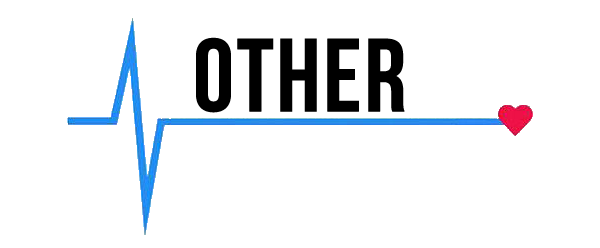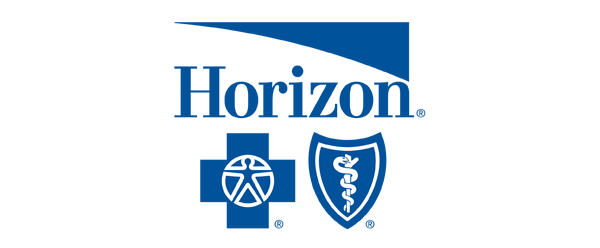Oral Appliance Therapy (OAT) and using a dental sleep device are straightforward treatments designed to keep your airway open during sleep.
Many individuals with sleep apnea experience blockages when their tongue and soft tissues relax excessively, obstructing the flow of air. OAT devices address this by gently shifting your lower jaw and tongue, holding everything in place to facilitate easier breathing. This minor adjustment can significantly improve your sleep quality.
One of the most immediate benefits people notice is a reduction, or even complete elimination, of snoring. This change means you’re less likely to wake up gasping for air, allowing your body to receive more oxygen with fewer interruptions.
Consequently, your sleep becomes deeper, and you wake up feeling more rested. OAT genuinely enhances your nights, leaving you feeling fresher and making every morning start a bit brighter.
“Oral appliance therapy (OAT) can be a reliable treatment modality to treat OSA, and performing a separate overnight posttreatment titration study further ensures its effectiveness,” states Military Medicine. “Furthermore, OAT can be an effective treatment modality even for moderate-to-severe OSA with posttreatment titration.”
Transforming Lives Through a Dental Sleep Device
Real stories from people using dental sleep device treatments resonate more deeply than charts or lab numbers.
Many individuals report feeling truly alive again, with some even experiencing deep sleep for the first time in years. They discover new energy during the day, and waking up is no longer a struggle. This might sound simple, but the transformation is profound.
For instance, some patients humorously share that they no longer need daytime naps, crediting OAT with finally bringing them genuine rest. Similarly, others remark on sleeping eight hours straight, a feat that once seemed impossible.
These positive changes extend beyond just sleep. Sometimes, students notice that their focus sharpens and grades improve, leading to more smiles and lighter days. Others, who once dreaded travel due to constant fatigue, now sleep soundly through the night on trips, waking up alert, ready, and full of energy and good spirits.
Such personal experiences powerfully illustrate the profound impact of OAT, revealing a significant improvement in daily living for many.
“Eight out of 10 newly diagnosed OSA patients choose oral appliance therapy over CPAP or doing nothing,” according to Sleep Review Magazine. “79% of newly diagnosed adult OSA patients chose oral appliance therapy over CPAP.”
Beyond Sleep: A Spectrum of Health Advantages
A significant benefit people quickly notice with using a dental sleep device is a dramatic reduction in snoring. This often allows couples to get their first real, uninterrupted sleep in years.
Some finally slept through the night after decades of interruptions once their partners started using OAT devices. Similarly, others were able to return to their bed, grateful for the newfound quiet.
OAT’s benefits extend beyond just improving sleep. Many users find their headaches disappear. Many patients realize the morning pain vanishes because oxygen levels remain steady overnight. Several report that their migraines cease.
Others experience improvements in blood pressure, with many sharing stories of their numbers finally stabilizing. Some individuals discover that TMJ pain and teeth grinding diminish, and they often report better focus and a happier mood throughout the day. Many patients haven’t had any Atrial Fibrillation (Afib) episodes since starting OAT.
OAT devices are quiet, small, and easily portable, making them convenient for frequent travelers. Many users appreciate OAT’s simplicity and silent operation compared to bulkier alternatives.
Dental Sleep Device Precision and What Works
A dental sleep device works best due to a combination of factors, with patient selection being paramount. Doctors typically recommend OAT for individuals with mild or moderate sleep apnea, as these patients often experience the most significant improvements.
While those with more severe sleep apnea might find some relief if other treatments aren’t effective, OAT truly excels in less severe cases.
Device design is another crucial element, as a custom fit makes a world of difference for each patient. Mandibular advancement devices are gradually adjusted by dentists over time to suit individual needs, incrementally moving the lower jaw.
This personalized approach is essential because no two people have the exact same jaw structure or response to the therapy.
This gradual adjustment requires patience, often spanning several months, but it ultimately leads to greater comfort and improved sleep. Success hinges on trusting the process and maintaining open communication with healthcare providers, as patient feedback helps guide necessary changes.
Follow-up sleep tests then confirm the treatment’s effectiveness, leading to healthier sleep and a higher likelihood of long-term adherence to the therapy.
“Oral appliance therapy is an effective treatment option for snoring and obstructive sleep apnea (OSA),” states the American Academy of Dental Sleep Medicine. “An oral appliance fits over your teeth like an orthodontic retainer while you sleep and supports your jaw in a forward position to keep your airway open. A custom-fit oral appliance can improve your sleep, restore your alertness, and revitalize your health.”
The Key to Lasting Benefits
Adherence to a dental sleep device is crucial for its effectiveness, with most patients consistently using their devices as directed. Adherence rates often reach 90 percent, significantly surpassing those of other sleep apnea treatments, as even the most potent therapy proves ineffective without regular use.
The success of OAT hinges on teamwork between healthcare professionals. A sleep doctor diagnoses the condition and outlines the treatment plan, while a specially trained dentist fits the device and monitors progress. Regular check-ins with both specialists are essential to ensure comfort and optimal function of the appliance.
Incorporating myofunctional exercises can further enhance the benefits of OAT. These simple exercises target the tongue, mouth, and throat, strengthening muscles to facilitate easier breathing both with and without the device. Practicing nasal breathing and proper tongue placement also contributes to improved outcomes.
Ultimately, addressing sleep apnea often requires a multifaceted approach. The combination of mechanical solutions like OAT and targeted muscle exercises can lead to significantly improved sleep quality and overall wellbeing for many individuals following this personalized strategy.
Navigating Your Dental Sleep Device Adjustment Phase
Oral appliance therapy (OAT) can provide significant relief for individuals with sleep apnea, though it’s important to anticipate a few initial challenges as you start using your dental sleep device.
Most people experience an adjustment period with the new device, typically lasting two to four weeks. During this time, the appliance may feel unusual or even awkward as the jaw and mouth acclimate to its presence.
Initially, some users might notice increased saliva production, while others experience a drier mouth than usual. Both sensations generally diminish over time. If dryness persists, minor device adjustments or the use of a simple mouth spray can often provide relief.
Temporary jaw pain or tenderness as well as tooth or gum sensitivity can also arise in the beginning. While potentially discouraging, this discomfort typically fades as the mouth adapts to the device. Individuals with persistent jaw soreness or gum issues should consult their provider, as small adjustments often yield significant improvements.
Talking or swallowing may feel tricky at first, but these issues usually resolve with patience and practice, as everyone adapts at their own pace. Understanding these potential initial challenges can make adhering to the therapy much easier, especially with strong support from a health care team.
Remaining patients during the first few weeks often leads to more effective treatment and ultimately, better sleep.
Long-Term Considerations and Effectiveness
While initial adjustment to anyone’s dental sleep device is common, long-term use can present new challenges. Changes in tooth position or bite may gradually occur, sometimes even leading to rare instances of tooth loosening.
These shifts can persist beyond two years of OAT use, with individuals noticing their front teeth no longer meeting or their molars drifting apart, which can complicate chewing. Such dental and jaw joint problems can unfortunately counteract the comfort that these devices promise.
Beyond the initial fitting, ongoing dental checkups with specialists familiar with sleep apnea are important. Small, cumulative changes can affect comfort and make consistent nightly use difficult.
Some individuals may find their OAT becomes less effective after many years, particularly after a decade or more. Factors such as aging, weight gain, or changes in bite can contribute to this, highlighting that the device is not a one-time fix. Regular reassessment, and sometimes adjustments, are necessary to maintain optimal results.
Furthermore, the appliance may not be effective from the outset, often due to improper patient selection. OAT is most successful for individuals with mild or moderate sleep apnea; for those with severe sleep apnea, results frequently fall short, leaving them at risk for ongoing health problems.
- Structural issues within the mouth can also hinder OAT effectiveness. The device requires strong teeth for proper retention, making it unsuitable for individuals with significant tooth loss, dentures, or severe gum disease. Unique jaw or airway anatomy, as well as problems with nasal breathing or a stiff tongue, can also limit its utility.
- Problems can also arise from a poorly fitting or non-adjustable device. Inexpensive, over-the-counter mouthguards often fit poorly, are uncomfortable, and offer little benefit. If the device doesn’t adequately advance the jaw or isn’t finely tuned to the individual, breathing issues may persist.
- A poor fit can also lead to drooling or irritation. Even a perfectly fitting device is ineffective if worn inconsistently or intermittently, and unlike some other therapies, oral appliances do not track usage, making it easy for users to unknowingly miss nights. Ongoing issues like jaw pain or bite changes can also lead patients to discontinue therapy, even when it is successfully managing their sleep apnea.
Dental Sleep Device Treatment and Its Future Outlook
One notable dental sleep device benefit is the frequent and substantial reduction, or even complete elimination, of snoring, leading to more restful sleep. Objective measurements, such as the Apnea-Hypopnea Index (AHI), consistently show marked improvements.
A comprehensive meta-analysis of 42 studies, for example, reported a 48 percent AHI reduction in mild cases, a 67 percent improvement in moderate cases, and a 62 percent improvement in severe sleep apnea, with Mandibular Advancement Devices (MADs) appearing slightly more effective than Tongue-Stabilizing Devices (TSDs) for mild cases.
Doctors generally consider OAT successful if the AHI drops below five events per hour, or sometimes under 10, or by at least 50 percent from baseline. Research indicates that OAT can achieve an AHI under 10 in up to 85 percent of cases. One study even found that 88 percent of patients experienced excellent results after just one night, with 75 percent reaching an AHI below 5.
For mild and moderate cases, new protocols incorporating home sleep tests show success rates comparable to CPAP (Continuous Positive Airway Pressure), reaching up to 85 percent in controlled trials.
While CPAP often achieves a greater reduction in AHI, overall health improvements can be similar to those seen with OAT. CPAP may lead to a higher percentage of individuals reaching “normal” sleep breathing, but this hinges on consistent use.
In practice, OAT significantly outperforms CPAP in terms of patient compliance. Approximately 90 percent of OAT users adhere to treatment compared to about half of CPAP users.
This means that despite CPAP’s theoretical superiority in AHI reduction, real-world outcomes often favor OAT due to its higher compliance. Researchers have observed that CPAP usage tends to decline after several years, whereas OAT users maintain regular use of their devices.
Patient Preference and Pilot Studies
Patient preference for most dental sleep device options is on the rise. In one pilot study, nearly 80 percent of new sleep apnea patients opted for oral appliances over CPAP or no treatment.
Although most doctors are aware of OAT, its recommendation and prescription rates remain relatively low, indicating a gap between knowledge and practice.
Nevertheless, interest is growing, a trend that accelerated during a major CPAP device recall and shortage, leading many to consider OAT as a primary choice. Currently, when given an option, half of new patients choose OAT, and when patients are empowered to make their own decision, both OAT and CPAP compliance rates improve.
The field of OAT is rapidly evolving. New thermoplastic materials are enhancing device flexibility and comfort, while the incorporation of titanium and other metals is increasing strength for more durable appliances. Digital technology, including 3D printing and CAD/CAM, is revolutionizing the creation of quick and precise custom devices, leading to better fit and fewer side effects like jaw pain.
Digital scans are also replacing traditional putty molds, offering a more pleasant experience and enabling the creation of detailed custom designs that enhance comfort and outcomes. Rapid prototyping further facilitates the testing of new designs.
Combination treatments are also gaining traction, with OAT being used alongside CPAP or upper airway stimulation to optimize sleep quality or mitigate CPAP side effects. Myofunctional therapy, a series of oral exercises, is emerging as a valuable adjunct to OAT.
Furthermore, research is exploring OAT’s potential for treating other conditions like insomnia, restless leg syndrome, and even its application in pediatric sleep apnea.
OAT is continuously improving in terms of comfort, fit, and results. As new technologies emerge, OAT is solidifying its position as a vital component of comprehensive sleep care, offering individuals with sleep apnea more choices.
How Does a Dental Sleep Device Work?
A dental sleep device looks a bit like a sports mouth guard or dental retainer. You pop it in before bed and wear it overnight.
Its main job is to help you breathe easier while you sleep. Most devices hold your lower jaw and tongue forward. This stops soft tissues from blocking your airway.
Another type uses gentle suction to keep just your tongue in place. Both approaches make it easier to breathe, cutting down on snoring and sleep apnea.
Here are common questions and answers:
| Question | Answer | ||||
| Am I a good candidate for an oral appliance, or should I use a CPAP machine? | Oral appliances are generally recommended as a first-line treatment for individuals with mild to moderate obstructive sleep apnea (OSA). They are also an excellent alternative for patients with any severity of OSA who cannot tolerate or consistently use a CPAP machine. CPAP is considered the gold standard, especially for severe OSA, but OAT often has higher compliance rates due to its comfort and portability. Your sleep physician and a qualified dental sleep specialist will determine the best option for your specific condition and preferences. | ||||
| Is a custom-fitted oral appliance really necessary, or can I use an over-the-counter one? | Custom-fitted oral appliances, made by a qualified dentist, are highly recommended and provide the best results for OSA treatment. They are precisely designed for your unique mouth anatomy and can be adjusted over time for optimal effectiveness and comfort. Over-the-counter “boil-and-bite” devices typically do not fit properly, can be uncomfortable, and may only lessen snoring without effectively treating OSA. They can also cause dental issues like bite changes or tooth pain. Professional guidance is crucial for proper treatment. | ||||
| What are the main advantages of an oral appliance compared to a CPAP machine? | Patients often prefer oral appliances for several reasons:
|
Portability: They are small, lightweight, and don’t require electricity, making them ideal for travel. | Quiet Operation: Unlike CPAP machines, oral appliances are silent, benefiting both the user and their bed partner. | Convenience: They are easy to insert, remove, and clean, with minimal maintenance. | Compliance: Patients tend to use oral appliances more consistently than CPAP. |
| What are the potential side effects of using an oral appliance? | Most side effects are temporary and occur during the initial adjustment period (2-4 weeks). These can include:
Long-term use can sometimes lead to changes in your bite, tooth movement, or persistent TMJ pain. Regular follow-up with your dentist is crucial to monitor and manage these issues. |
||||
| How long does it take to get used to an oral appliance? | It typically takes about two to four weeks to adjust to wearing an oral appliance nightly. It may feel odd at first, but gradually increasing the wearing time can help you get accustomed to it. Any initial discomfort usually improves as you adapt. | ||||
| What should I do if my oral appliance isn’t working or causes discomfort? | Do not give up. If your oral appliance isn’t working effectively, if you experience persistent discomfort, jaw pain, or notice changes in your bite, it’s crucial to consult your qualified dental sleep specialist immediately. Adjustments can often resolve issues like poor fit or discomfort. In some cases, further evaluation, such as a follow-up sleep study or a drug-induced sleep endoscopy, might be needed to understand why the appliance isn’t effective and to guide further treatment or adjustments. |
Wellness and Pain
Find your personalized dental sleep device by visiting Wellness and Pain. We offer conservative treatments, routine visits, and minimally invasive quick-recovery procedures. We can keep you free of problems by providing lifestyle education and home care advice.
This enables you to avoid and manage issues, quickly relieving your inhibiting lifestyle conditions when complications arise. We personalize patient care plans based on each patient’s condition and unique circumstances. Wellness and Pain can help improve wellness, increase mobility, relieve pain, and enhance your mental space and overall health.











